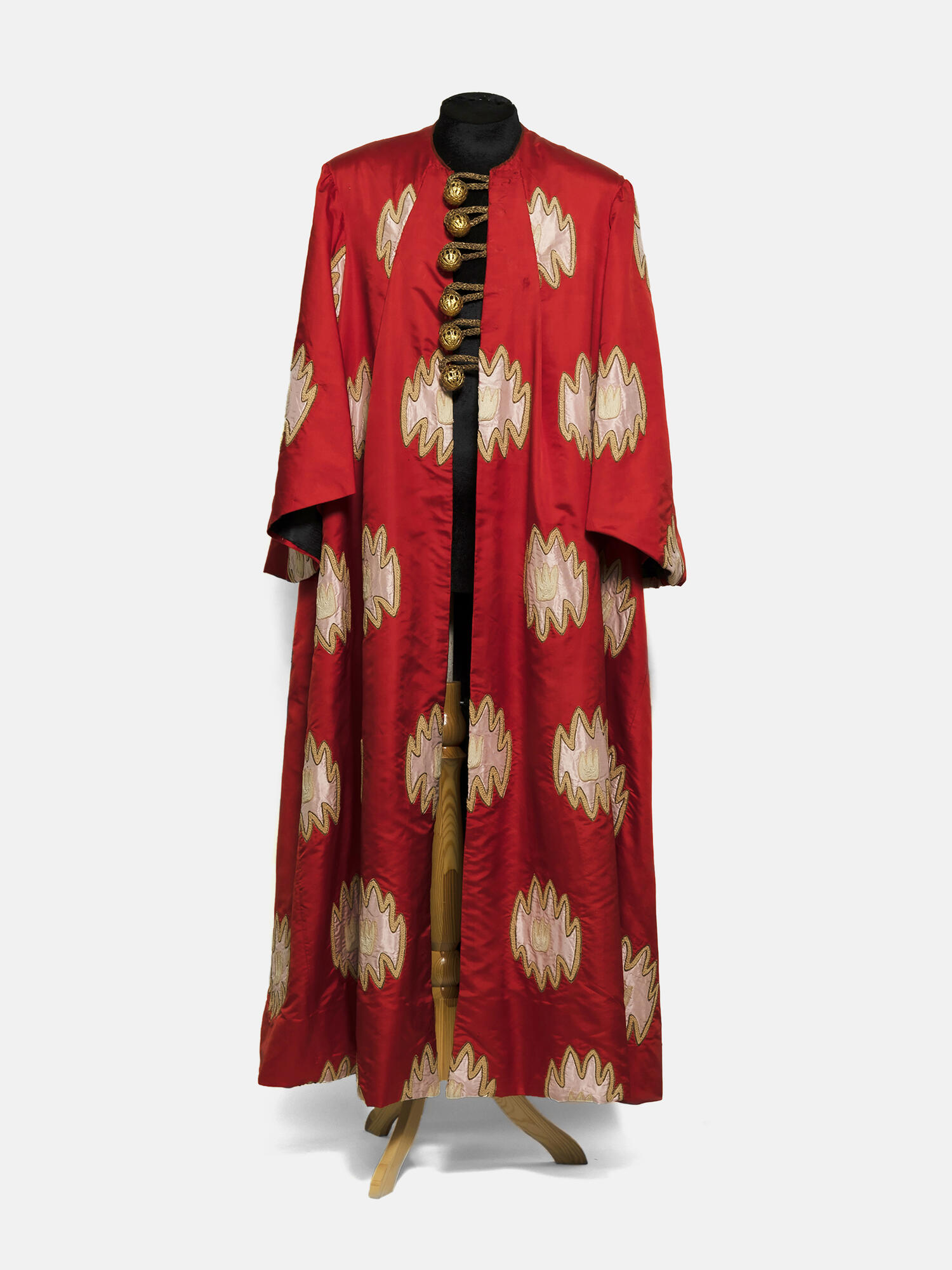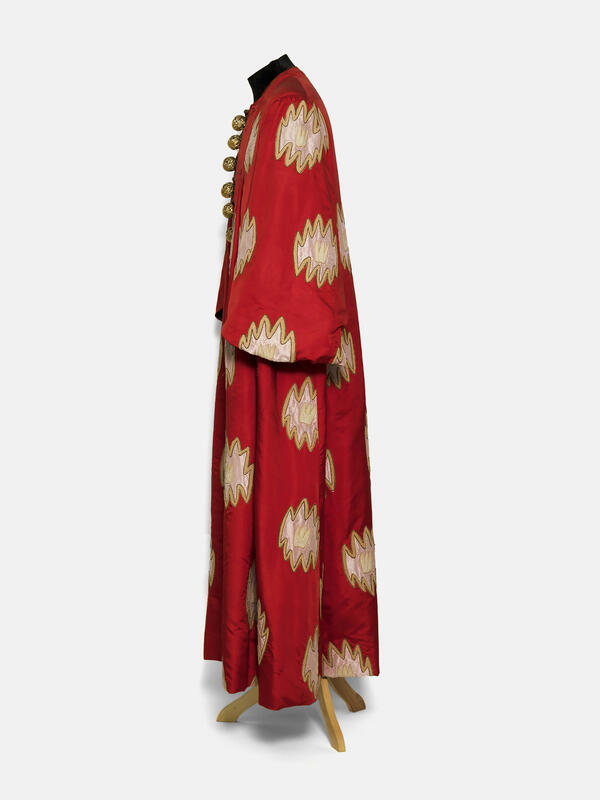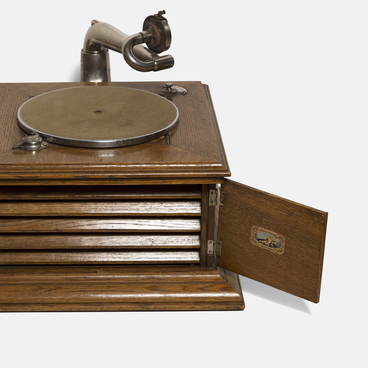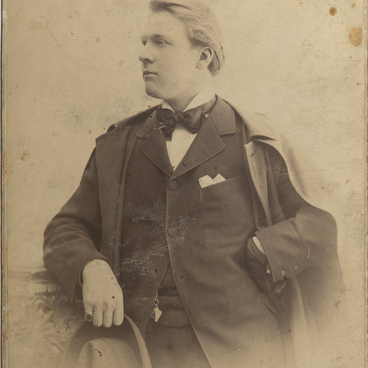This is Feodor Chaliapin’s authentic costume for the role of Konchak Khan from the opera “Prince Igor” by Alexander Borodin. The natural silk robe with a lining was made in a theater sewing workshop. It is adorned with floral appliques, golden threads and hollow dark metal buttons. Traditionally, the pattern of oriental clothing served two purposes — decoration and protection from evil forces. The ornaments were believed to attract wealth, health, and fertility.
Konchak Khan was a real historical figure of the 12th century. He was a Polovtsian khan, who waged war against Kyiv and Pereyaslavl. He is mentioned in the Russian chronicles and in “The Tale of Igor’s Campaign”. Konchak took Vladimir, the son of Prince Igor Svyatoslavich, captive. The Slavs and the Polovtsians succeeded in concluding peace by arranging a marriage between Vladimir and Konchak’s daughter Svoboda.
In 1890, the “Prince Igor” opera was first staged at the Mariinsky Theater in Saint Petersburg. The production also enjoyed a major success at the Théâtre du Châtelet in Paris during Sergei Diaghilev’s Russian Seasons in the spring of 1909. The production was the result of a bright synthesis of choreography, music and painting, and the ancient Russian tale was brought to life through the choir and solo performances amidst the large stage sets created by Nikolai Roerich.
Feodor Chaliapin first played the role of Konchak Khan on May 26, 1914, at the Royal Theater in London. The singer would eventually perform all the main roles in the opera — Prince Igor, Prince Vladimir Galitsky and Konchak Khan. The aria of the Polovtsian khan was the “most precious diamond” in the repertoire of the Russian bass.
In November 1931, Chaliapin performed the role of Konchak Khan for the second time in Paris during the seasons of the Russian Opera. His youngest son Feodor Chaliapin recalled how his father was rehearsing this role,




